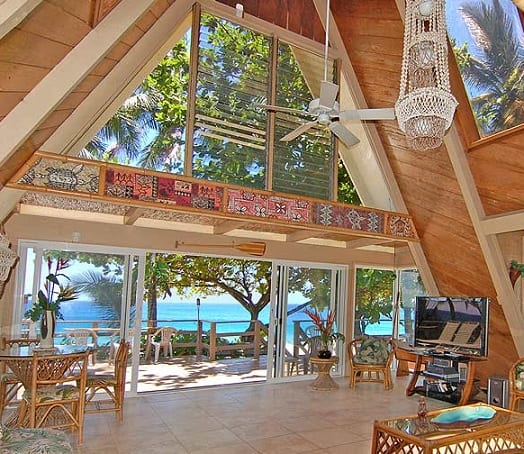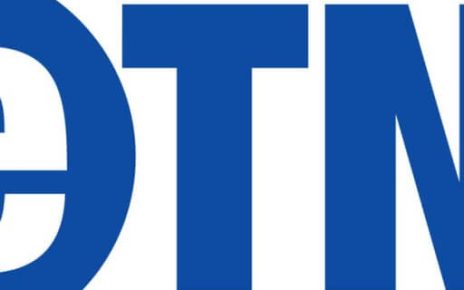With more tourists arriving in Hawaii ever since the state changed travel rules back on October 15, the Hawaii Tourism Authority has been tracking where these holiday makers are staying. So far and up until last month, more of them are opting to stay at vacation rentals versus a standard hotel.
More tourists to the Aloha State are spending their holiday time in Hawaii vacation rentals versus hotels – almost twice as much. Last month, the average occupancy of vacation rentals was 40.5 percent while hotel occupancy came in at 23.8 percent.
Unlike standard hotels, condominium hotels, timeshare resorts, and vacation rental units are not necessarily available year-round or each day of the month and often accommodate a larger number of guests than traditional hotel rooms.
In December 2020, the total monthly supply of statewide vacation rentals was 621,100 unit nights (-25.4%) and monthly demand was 251,300 unit nights (-59.9%). However, the unit average daily rate (ADR) for vacation rental units statewide in December was $251, which was less than the ADR for hotels ($291).
Beginning October 15, passengers arriving from out-of-state and traveling inter-county could bypass the mandatory 14-day self-quarantine with a valid negative COVID-19 NAAT test result from a Trusted Testing and Travel Partner through the state’s Safe Travels program. Effective November 24, all trans-Pacific travelers participating in the pre-travel testing program were required to have a negative test result before their departure to Hawaii, and test results would no longer be accepted once a traveler arrives in Hawaii. On December 2, Kauai County temporarily suspended its participation in the state’s Safe Travels program, making it mandatory for all travelers to Kauai to quarantine upon arrival. On December 10, the mandatory quarantine was reduced from 14 to 10 days in accordance with the U.S. Centers for Disease Control and Prevention’s guidelines. The counties of Hawaii, Maui, and Kalawao (Molokai) also had a partial quarantine in place in December.
In December, legal short-term rentals were allowed to operate on Oahu, Hawaii Island and Kauai as long as they were not being used as a quarantine location. For Maui County, vacation rentals were also allowed to operate during December, but could only be used as a place of quarantine by interisland travelers awaiting their pre-travel test results.
The Hawaii Tourism Authority’s (HTA) Tourism Research Division issued the report’s findings utilizing data compiled by Transparent Intelligence, Inc. The data in this report specifically excludes units reported in HTA’s Hawaii Hotel Performance Report and Hawaii Timeshare Quarterly Survey Report. In this report, a vacation rental is defined as the use of a rental house, condominium unit, private room in private home, or shared room/space in private home. This report also does not determine or differentiate between units that are permitted or unpermitted. The “legality” of any given vacation rental unit is determined on a county basis.
Year-to-Date December 2020
Short-term rentals were not on the state’s list of essential businesses at the beginning of June, and the county mayors then enacted their own rules regarding short-term rentals. On Oahu, short-term rentals were not allowed to operate for much of 2020. For Hawaii Island, Kauai and Maui County, legal short-term rentals were allowed to operate as long as they were not used as quarantine locations. However, in October, Maui County started allowing travelers awaiting their pre-travel test results to stay in a vacation rental as their place of quarantine.
In 2020, the statewide vacation rental supply fell by 39.6 percent compared to 2019 levels with 6.0 million available unit nights. Unit demand was more sharply impacted, down 65.1 percent to 2.6 million unit nights. The average 2020 occupancy for Hawaii vacation rental units was 42.8 percent (-42.3 percentage points) and ADR was $238 (-17.9%) (Figure 2). In comparison, Hawaii hotels were 37.1 percent occupied in 2020 with ADR at $267.
Island Highlights
In December, Maui County had the largest vacation rental supply of all four counties with 250,800 available unit nights (-10.6%) and unit demand was 104,800 unit nights (-52.7%), resulting in 41.8 percent occupancy (-37.2 percentage points) with an ADR of $277 (-24.8%). Maui County hotels were 26.0 percent occupied with an ADR of $501.
During 2020, there were 2.1 million available unit nights in Maui County (-33.1%). Maui County vacation rental occupancy was 42.4 percent (-46.3 percentage points) and ADR was $293. In comparison, Maui County hotels were 33.9 percent occupied in 2020 with ADR at $414.
Oahu vacation rental supply was 135,900 available unit nights (-41.7%) in December. Unit demand was 62,800 unit nights (-64.4%), resulting in 46.2 percent occupancy
(-29.5 percentage points) and an ADR of $204 (-19.5%). Oahu hotels were 23.6 percent occupied with an ADR of $184.
Oahu had 1.7 million available unit nights (-46.4%) in 2020. Oahu vacation rental occupancy was 42.4 percent (-43.4 percentage points) and ADR was $184. In comparison, Oahu hotels reported 39.0 percent occupancy in 2020 with ADR at $216.
The island of Hawaii vacation rental supply was 129,000 available unit nights (-35.8%) in December. Unit demand was 59,300 unit nights (-58.9%), resulting in 46.0 percent occupancy (-25.9 percentage points) with an ADR of $232 (-7.4%). Hawaii Island hotels were 26.8 percent occupied with an ADR of $329.
Vacation rental supply for the year was down 42.1 percent to 1.4 million unit nights for Hawaii Island. Hawaii Island vacation rentals ended the year with 44.6 percent occupancy (-32.7 percentage points) and ADR of $188 (-20.5). In comparison, Hawaii Island hotels were 38.0 percent occupied in 2020 with ADR at $254.
Kauai had the fewest number of available unit nights in December at 105,500 (-10.7%). Unit demand was 24,400 unit nights (-71.2%), resulting in 23.1 percent occupancy (-48.7 percentage points) with an ADR of $309 (-21.6%). Kauai hotels were 13.4 percent occupied with an ADR of $178.
In 2020, Kauai vacation rental supply was 877,300 available unit nights (-33.7%) with 41.5 percent occupancy (-44.9 percentage points). Kauai vacation rental ADR was the highest in the state at $297 (-21.0%). Kauai hotels were 33.0 percent occupied in 2020 with ADR at $262.




